- Home
- Best Medium
Choosing the Best Painting Medium
What is the best painting medium for the artist?
Humans have been creating art for centuries, ever since the caveman days. People have an innate desire to express how we feel and what we see.
Over the centuries mankind has used various types of painting mediums. The oldest paintings in existence are over 40,000 years old.
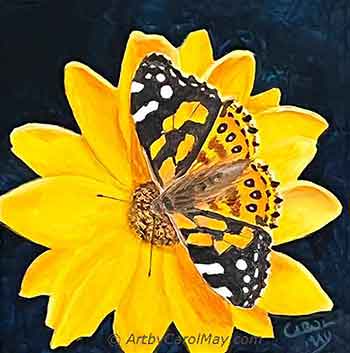 Alkyd is a popular medium.
Alkyd is a popular medium.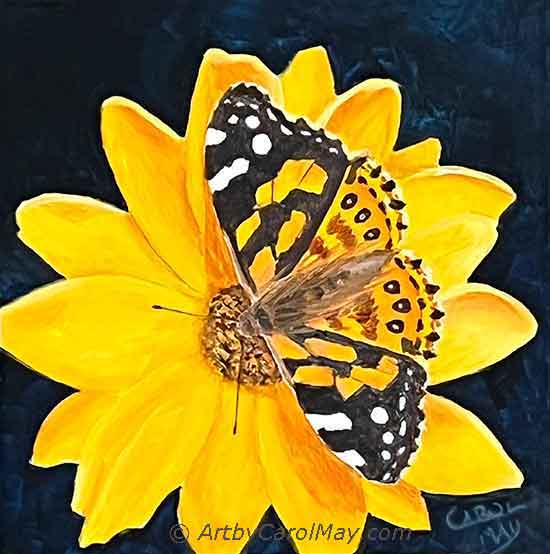 Alkyd is a popular medium.
Alkyd is a popular medium.What Painting Medium Should We Start With?
Our painting medium is a matter of individual preference. Oil, watercolor, acrylic and alkyd are all good choices for the beginning artist.
What is Medium in Art?
In the art world the term medium is used different ways:
- Medium is the type of art such as carving, printing, painting, etc.
- Medium is the material used for art for example, acrylic or oils are mediums.
- Mediums are mixed into paint to thicken, thin, extend it or change the drying time.
Mediums and media are both plural forms of medium in art.
What Are the Best Painting Mediums?
All art paints use the same pigment colors. The only difference between the mediums is the substance added to carry the paint pigments.
For example, oil, acrylic polymer, alkyd resin, gum arabic or glycerin in the case of watercolors.
Oil Paint
Around the 1500s oil paintings became popular. Oil paint pigments are commonly suspended in linseed oil, hence the name oil paints.
The oil makes the paint slow drying. That is an asset because it gives time to change and adjust things before the paint dries.
Actually, I am partial to oil painting. That is what I used while learning to paint.
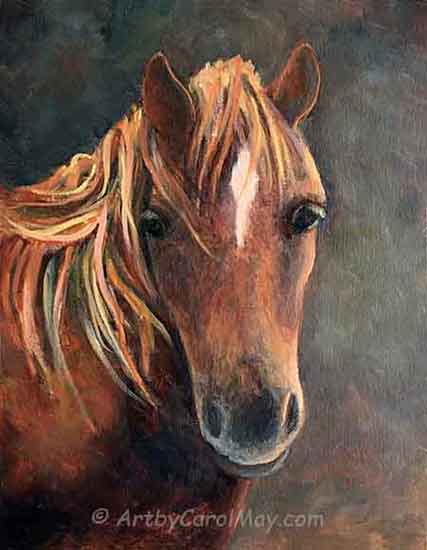 Oil paint is a pleasure to use.
Oil paint is a pleasure to use.How long do oil paintings take to dry?
Temperature and humidity affect the drying time. Thin oil paint can dry to touch in 2-12 days.
We may use various mediums to speed the drying time such as Liquin or Galkyd.
However, thick layers of oil paint may take up to 6 months to dry thoroughly.
What do we need for painting oils?
Oils are normally painted on a canvas. Choose either traditional stretched canvas or gallery wrap canvas.
It is stapled on the back, so the finished painting does not require a frame.
Canvas boards are great for practice and learning how to paint.
Oil paint is thinned and cleaned-up with a solvent. Gamsol, an odorless mineral spirits, is considered the best solvent for painting indoors.
Hog hair brushes are traditionally used for oil painting. Synthetic brushes, labeled specifically for oils work well, too.
Alkyd Paint
Alkyd paint is a modern type of painting medium. The color pigments are suspended in an alkyd resin.
They are extremely durable, so car manufactures started using them in the early 1900s.
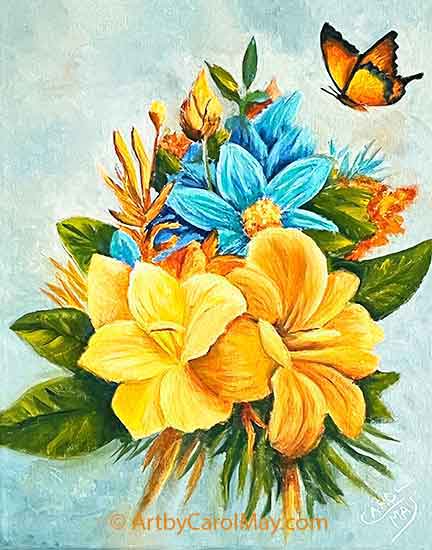 It's a joy painting a gift for a friend.
It's a joy painting a gift for a friend.Winsor & Newton started making alkyd art paints in the 1960s.
They dry completely overnight to a uniform matte finish.
Their drying time provides time for both blending, as well as painting layers in a short amount of time.
I find their fast dry time makes it easier to paint the finer details.
Alkyd has been my favorite "oil painting" medium since the 1980s.
They look the same as oil paintings.
Alkyds use the same techniques and supplies, as oil paintings.
Watercolor
Many watercolors are transparent and let the white of the surface show thru. It gives them a light, luminous appearance.
Watercolors are thinned and cleaned up with water. They dry
quickly and have a fresh appearance.
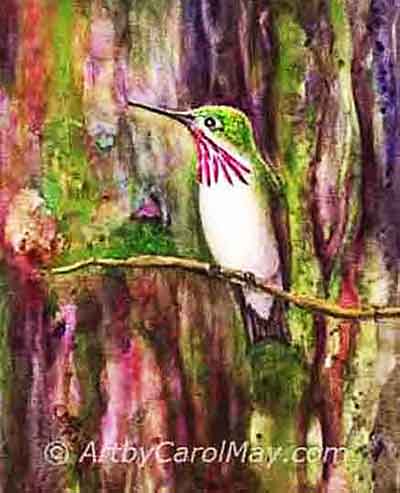 It's fun to play with watercolor.
It's fun to play with watercolor.There are two types of watercolor paint. It may be purchased in dried cubes, called pans. Or we may get moist watercolor paint sealed in tubes.
Watercolor paintings are traditionally done on paper. To protect the finished painting, it must be framed with a mat under glass.
Today watercolors may be painted on Aquabord or canvas made especially for watercolor.
Dry watercolor paintings on Aquabord or canvas can be sprayed with a fixative. Then the painting is framed without glass.
It is difficult to adjust watercolor after it has been applied to the painting surface, especially after it has already dried.
The paint is easier to remove from Aquabord or watercolor canvas.
Acrylic
Acrylic is a water-based paint that dries very quickly. Slow drying mediums may be added to extend the drying time.
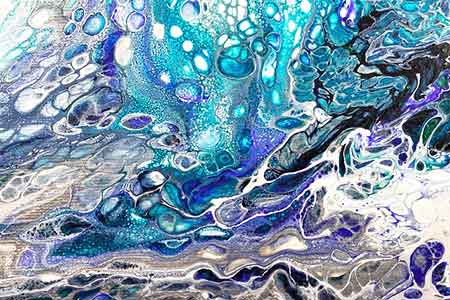 Acrylic is a versatile medium.
Acrylic is a versatile medium.Some people consider acrylic the best painting medium for beginners.
This medium may be painted in thin layers to resemble watercolors. It may also be painted thick to resemble oil paints.
Acrylic may be painted on anything from paper to fabric, wood or rocks. I painted fruit and flowers on my kitchen cabinets.
Acrylic pouring is a popular form of modern acrylic painting.
Dried acrylic is flat without any gloss, so the finished paintings are normally varnished.
Finished acrylic paintings are very durable and they are framed without glass.
Compare the Popular Painting Mediums
Let's compare oil, watercolor, acrylic and alkyd for color, ease of use and longevity.
Oil paints are
deeply loved for their rich, luminous colors and the ability to blend
incredibly smoothly. They are slow drying,
but the possibility to rework paintings even months later is an appealing
feature. Odorless mineral spirits is recommended for clean-up.
Watercolors are known for their beautiful, translucent effects. Watercolor can be challenging to learn because the colors can move and blend in unexpected ways. It dries quickly. Its unique characteristics cannot be duplicated with other media.
Acrylic paints are known for their versatility and ease of use. Beginners often feel comfortable starting with acrylic due to its fast-drying speed and ability to be used on various surfaces. Color vibrancy is substantial, making it an excellent medium for bold, striking artwork.
Alkyd is a modern fine art paint. Alkyd resin speeds up the drying time and gives it intense durability. In terms of ease of use, it sits between oil and acrylic, drying faster than oil but slower than acrylic. Their cost is much the same as high-quality oils, and their color vibrancy is excellent.
Drying time: Acrylic and watercolor are the fastest. They dry within minutes to hours. Alkyd comes next, it dries fully overnight. Oil paint takes the longest, typically taking days to weeks to fully dry.
Color vibrancy is important to the artist. This can often come down to the specific brand and quality of the paint.
Generally, oils, acrylic, and alkyds offer the greatest saturation and depth of color. Watercolors offer a vibrancy of light and luminescence rather than saturation.
Longevity: Oil and alkyd paints are the most enduring. Acrylic, is also considered durable in most situations. Watercolor typically has a medium-longevity They require framing under glass and careful handling to ensure their longevity.
Remember, the lifespan of your artwork also greatly depends on the conditions under which it is stored and displayed.
Ease of use: Acrylic tends to be the most beginner-friendly, while oil and alkyd require a little more patience and skill. Watercolor can seem intimidating, but with practice, it can lead to some truly beautiful and delicate works.
Cost: Watercolor and acrylic are usually the most economical options. Oils and alkyds can be more expensive. However, they extend farther due to their thickness and high pigment load.
Keep these comparisons in mind as you choose your painting medium and venture into your artistic journey.
Before you begin painting, find answers to frequent questions.
Art Mediums in History
Charcoal was one of the first painting mediums. Cave dwellers did charcoal art around 28,000 years ago. Charcoal is still used by artists today for sketching or doing complete charcoal paintings.
Black ink: Around 5,000 years ago, charcoal was ground into a powder and combined with liquid to make black ink. Later the Chinese used plant dyes to make colored inks. Modern artists have a vast array of inks to choose from.
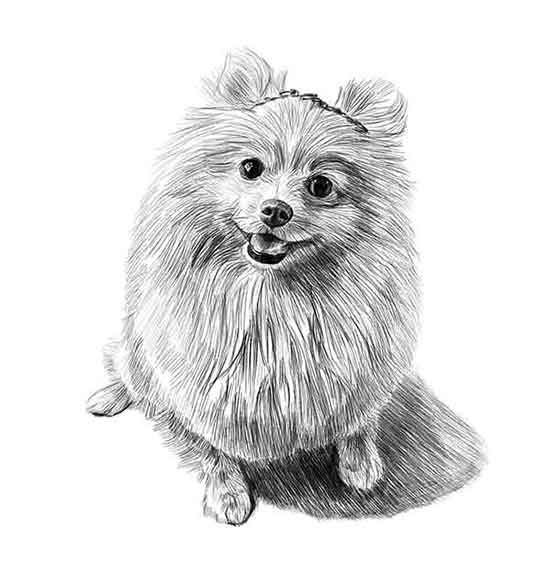 Lovely graphite artwork by Ermir Kolonja
Lovely graphite artwork by Ermir KolonjaGraphite has been in use for centuries. It was discovered in England in the 1500s.
Many of us probably used the common yellow #2 pencils in grade school.
- Art pencils labeled from B up to 8B are soft pencils, suitable for darker values.
- Pencils labeled H thru 6H are hard pencils generally used for sketching and light values.
- HB and F are between the soft "B pencils" and the hard "H pencils".
Modern artists, also have a wide selection of colored pencils.
Early paints were made from iron oxide ore. Today we know them as; yellow ochre, raw sienna, burnt sienna, raw umber and burnt umber.
We still use these earth paints today because they are reliable, color-fast and economical. They are an excellent addition to the artist's palette.
Earth colors are included in my recommended palette colors.
Historical Paint Mediums We Use Today
Artists still use the historical mediums like tempera, casein, fresco and gouache for modern artwork.
Fresco
Many fresco murals and paintings were done during the time of the Italian Renaissance.
In the early 1500s Michelangelo did nine fresco paintings portraying the book of Genesis on the ceiling of the chapel. The most famous one is the Creation of Man (Adam) in the painting below.
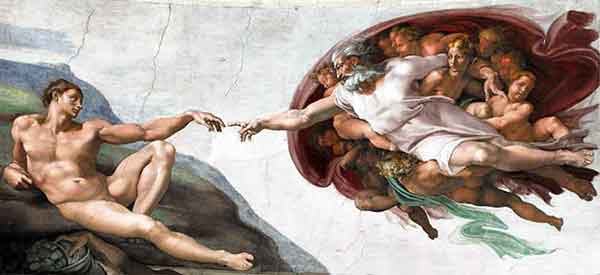 Man has been painting since the "Creation of Man"
Man has been painting since the "Creation of Man"Fresco was the best painting medium for the interior, plaster walls. The paintings are created by mixing powdered paint pigments with water. The mixture was painted on top of a thin layer of wet lime plaster.
As the plaster and paint dry, the two were fused together and dry into a lovely matte finish. They are extremely durable in the absence of water.
Tempera
Tempera is paint pigments mixed with egg yolks. It is also called, egg tempera. Tempera is fast drying and permanent. It is not flexible, so it needs to be painted on a rigid surface.
It has been used for centuries, as far back as the third century. The Egyptians used tempera and casein for their murals and paintings.
Tempera was the favored painting medium during the Middle
Ages from about 1200 until 1500 when the Renaissance began.
Casein
Casein is a painting medium similar to tempera. It is mixed with milk instead of eggs. It is thinned with water.
Today casein is considered one of, if not the best
painting medium for painting murals. See my casein butterfly painting.
Gouache
Gouache is another painting medium that has been around for centuries. It is an opaque water-based medium that dries fast. Their pigments are combined with gum arabic or dextrin and white paint.
Many modern artists consider gouache the best painting medium for design work, comics and illustrations.
Gouache is also used for airbrushing.
Pastel
Pastels were first made in the late 1500s. Ground paint pigments are combined with gum arabic or other glues. The pastels are formed into a stick similar to crayons or in a cake form.
In the 1600s Edgar Degas, a famous renaissance artist did 700 pastel paintings.
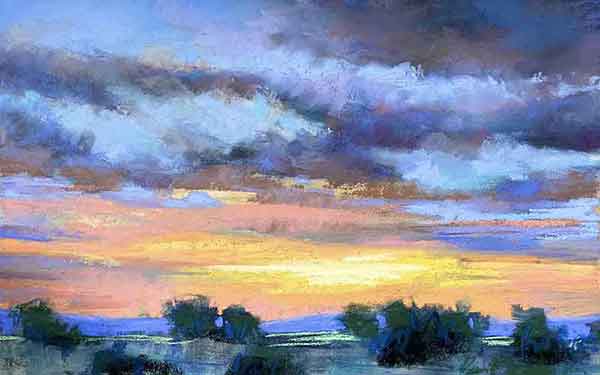 A modern pastel painting by LiberalLoner
A modern pastel painting by LiberalLonerThere are soft pastels, hard pastels, oil pastels and water pastels depending upon how they are manufactured. Pan pastels are soft pastels placed in a small pan.
Pastels are fast and fun to use. Use pastel paper with a textured surface to grip the pastels.
They can produce a lot of dust during use. Consequently, pastels are not considered the best painting medium for people with breathing problems.
Finished pastel paintings are subject to fading and may be smeared by touching. A spray fixative can be used to protect the painting, but it is known for dulling the colors slightly. Finished pastels should be framed under glass.
Pastels may be used over a dry watercolor painting to create emphasis and highlights.
Enjoy Your Painting Adventure!
Most artist try different mediums before settling on a favorite. It's a matter of finding your own best painting medium.







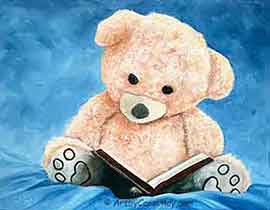 Are you eager to learn how to oil paint? What are the essential supplies for oil painting? What do we need for clean-up and how long do oil paintings take to dry? Learn the rules of oil painting and t…
Are you eager to learn how to oil paint? What are the essential supplies for oil painting? What do we need for clean-up and how long do oil paintings take to dry? Learn the rules of oil painting and t…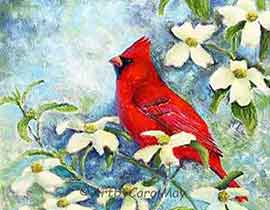 How do we create a focal point in art? Where do we put the focal point? How do we find the focus of an artwork? Should all paintings have a center of interest or can they have more than one? Learn fro…
How do we create a focal point in art? Where do we put the focal point? How do we find the focus of an artwork? Should all paintings have a center of interest or can they have more than one? Learn fro…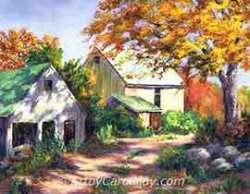 Art elements and principles appear over and over in good paintings. The elements and principles work together for us to create successful artwork. Art principles are the rules that govern how an artis…
Art elements and principles appear over and over in good paintings. The elements and principles work together for us to create successful artwork. Art principles are the rules that govern how an artis…